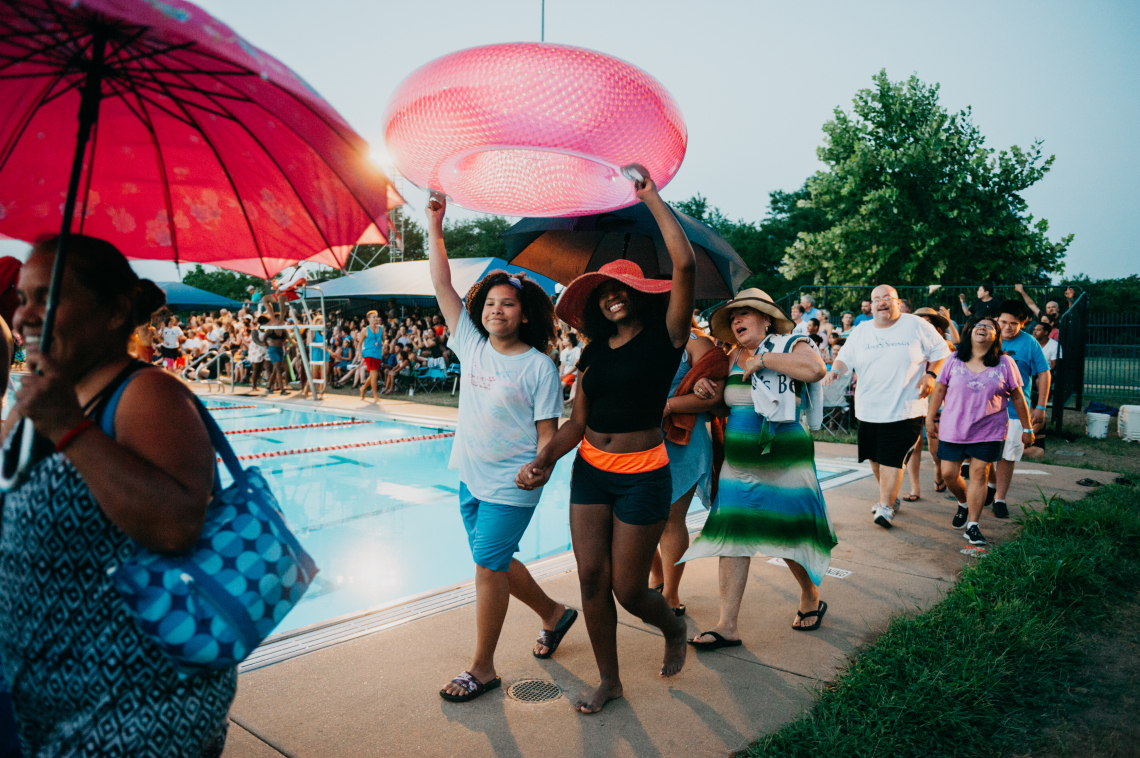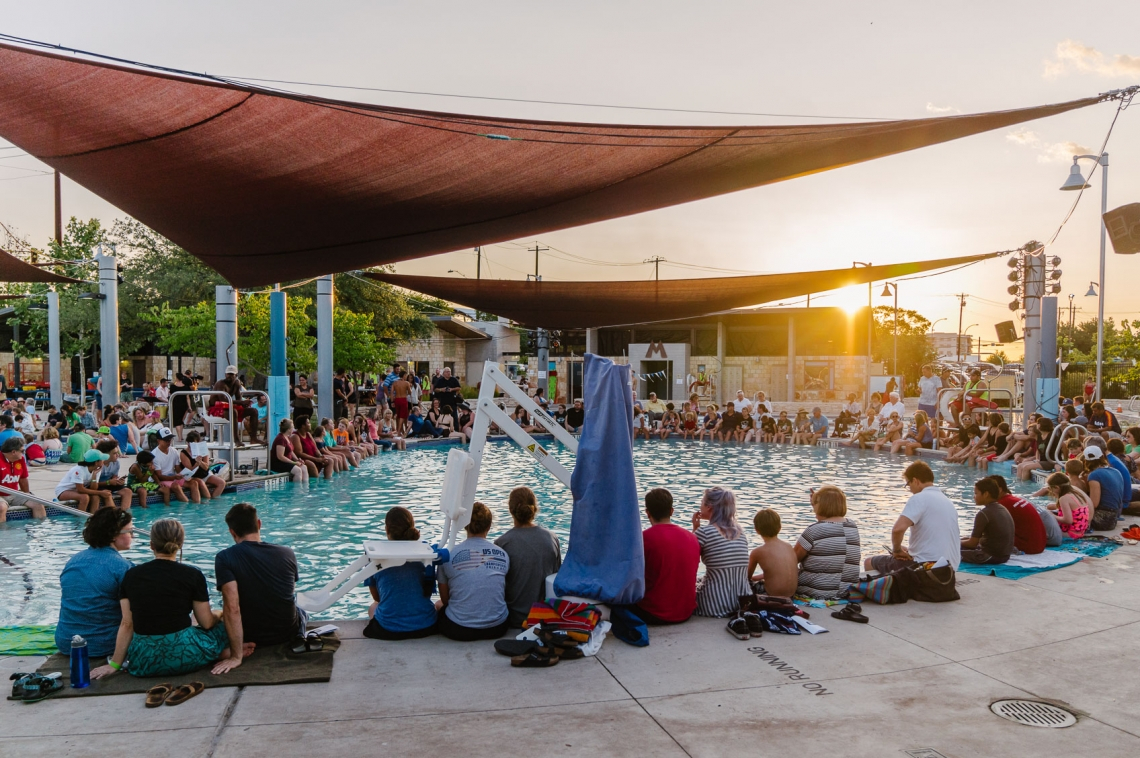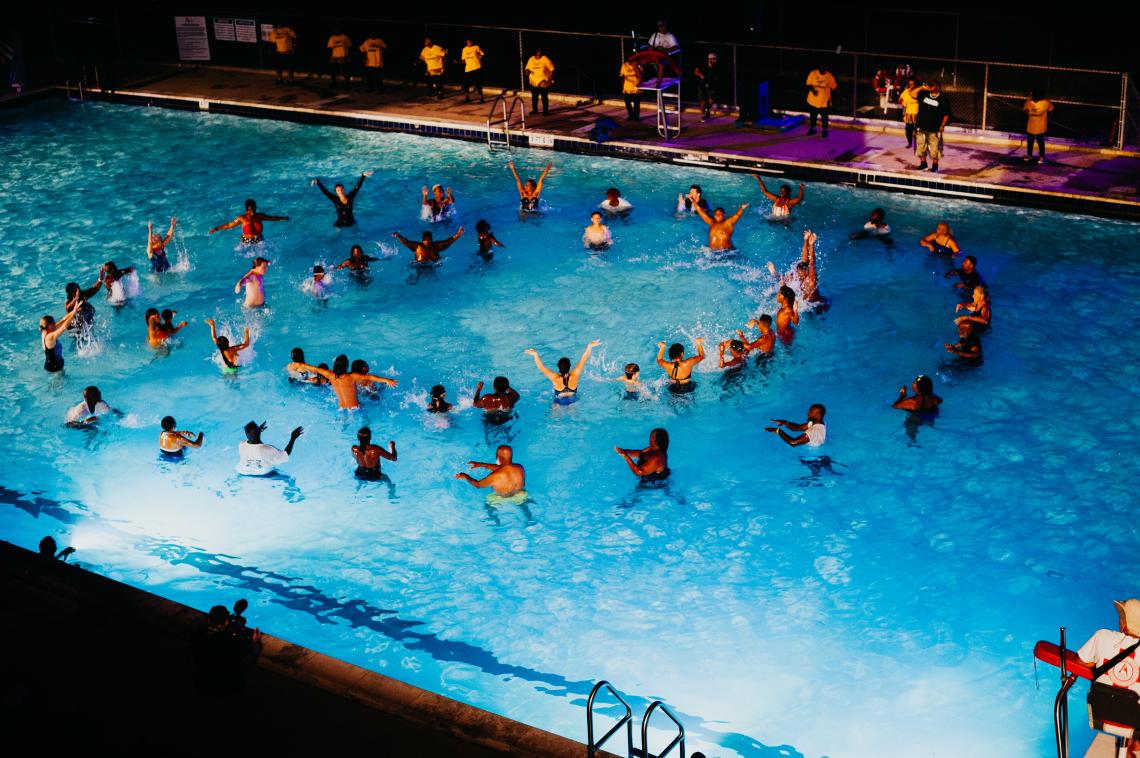


In creative placemaking, we talk all.the.time about “community.” Community-led work, community engagement in projects, community-driven initiatives, community involvement in policy, community buy-in for initiatives, etc etc.
And that’s as it should be—after all, people and their places are inextricably linked, and they can both meet their potential only when they’re able to work together intimately.
The confusion can creep in when we talk about how exactly to reach, connect to, and work with our communities to carry out effective and beneficial placemaking efforts. Good thing ArtPlace knows some experts on this topic!
Forklift Danceworks
Founded in 2001, the Austin, Texas-based Forklift Danceworks exists to activate communities through collaborative creative processes. Developed through collaborations with diverse groups including sanitation workers, warehouse employees, and retired Negro League Baseball players, their dances show the skilled movement and tell the often-unheard stories of the people whose work sustains our daily lives. Each Forklift performance is created by conducting long-term artistic and ethnographic research within a community that allows the artists to understand its history, challenges, and assets—while building trust and observing “movement material.”
Forklift artists then create choreography with community members that transforms the ordinary yet skillful and beautiful movements of their work into a performance accompanied by their stories, in their voices. Often presented in large-scale, site-specific settings, Forklift’s free performances consistently play to audiences in the thousands.
Through these performances, Forklift creates opportunities for more informed civic dialogue, deeper understanding of the jobs essential to urban life, and greater connection between residents and across neighborhoods. They have also helped to sway policy and funding decisions in favor of community needs by demonstrating the value of public services to Austin residents.
At the 2019 Creative Placemaking Leadership Summit West, held in Albuquerque this past February, Forklift’s Associate Artistic Director & Community Collaborations Director Krissie Marty, along with Paul Slutes of the Austin Parks & Recreation Department Aquatic Division and Lynn Osgood of GO collaborative, presented the session “Embodied Listening/Embedded Reflection: Arts-Based, Community-Focused Practices.” The session—part presentation, part participation—gave attendees a glimpse into Forklift’s community collaboration process through the lens of their My Park, My Pool, My City project, a three-year collaboration with Austin Aquatic staff and East Austin residents.
Attendees began the session by physically enacting with a partner a memory we had of a pool, of swimming, or of the movement of water. The variety of movements and the swell of emotion that quickly filled the room gave us our first inkling of how people we don’t think of as dancers (in this case, the majority of session participants) could provide professional choreographers with usable dance-making ideas.
Engaging the Community to Make It Visible
Planning for My Park, My Pool, My City began in 2015, against the backdrop of an infrastructure crisis in Austin: the high cost of maintaining an aging aquatics system where most pools are 50-plus years old was being confounded by class and racial privilege. While wealthier residents could always choose to use private country clubs or their backyard swimming pools, poorer residents had few or no swimming options beyond public pools.
Forklift spent two years in conversations and planning meetings with Austin’s Aquatics Division and listening to city staff and residents. In this time, they came to more fully understand the importance of pools as public gathering spaces and the challenges Austin’s pools were facing.
Then, each year for three years starting in 2017, My Park, My Pool, My City held three summer performances, and Forklift hosted and participated in town hall gatherings, community workshops, film screenings, and (naturally) pool parties leading up to and following each show.
Watch the first video in a trilogy about the pool performances to get a sense of how maintenance staff, lifeguards, and Austin residents of all ages and backgrounds worked together to create a unified atmosphere and affecting choreography that conveyed the import of these precious community resources. Over 2,000 people attended the first free performance, “Bartholomew Swims.” Audience members were asked to come in their bathing suits so they could join the dance and jump in the water.
How Community Engagement Adds Up to Change
My Park, My Pool, My City brought attention to Austin’s aquatic maintenance staff and helped them educate the community about what it takes to run the city’s public pools. According to Paul, the project “broadened conversations about our Aquatics system and pools policy.”
In 2018, Austinites voted 85 percent in favor of a bond that included $40 million for pools—a big jump from the originally proposed amount of $16 million. “Because of these performances,” Paul said, “our city leaders are paying more attention, and it led to our Aquatic Maintenance annual budget being increased by $1 million. When someone approaches you to do a project like this, you might just think it’s just crazy stuff, but no, it’s brought important changes for us."
Lynn added, “The conversations that happen from projects like these push policy, which pushes budgets. Forklift’s projects have been having impacts at a systems level.”
She had this advice to others interested in leveraging community involvement for community good where they live: “Don’t stop being artists. It’s great if you want to effect civic change, but if you’re an artist, don’t go out and become the League of Women Voters. What you do is magic.”
***
For more nitty-gritty on this project, watch the video “How to do Creative Placemaking: Digging Deep - Community Engagement Methods & Techniques,” featuring Forklift Danceworks and hosted by the Local Initiatives Support Corporation (LISC).
Read more about My Park, My Pool, My City.
Read more about all of Forklift’s projects.





